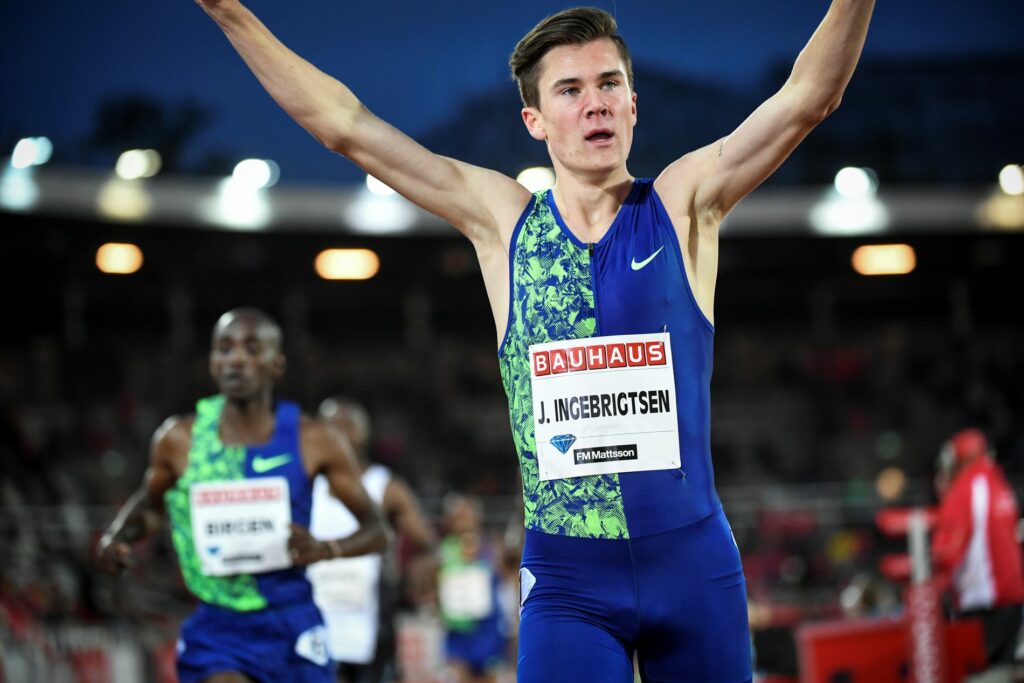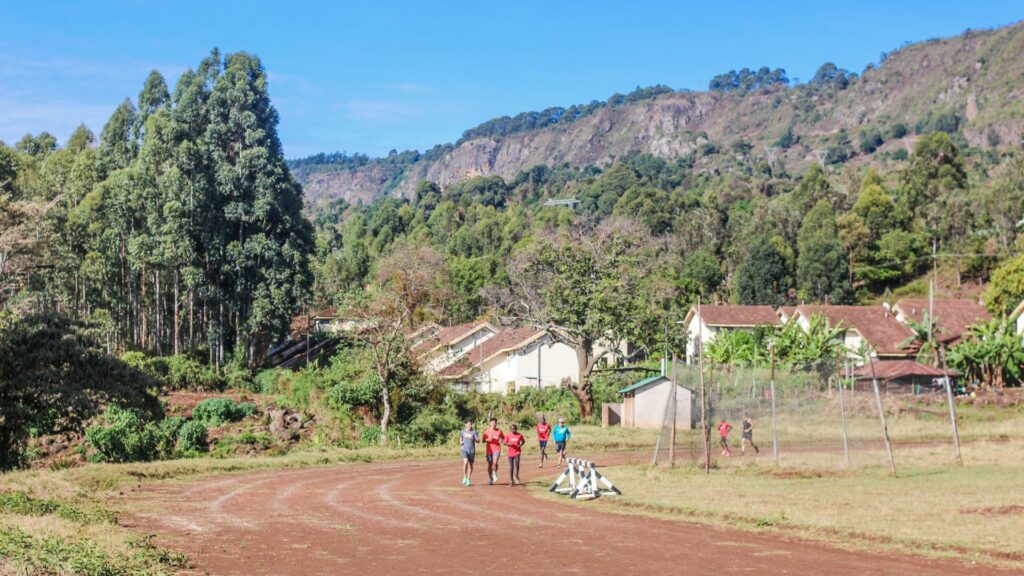
Comparing the Norwegian ‘Double Threshold Training System’ with the Canova ‘Special Block’
Over the past couple of podcast episodes, Callum and I had the opportunity to discuss the Double Threshold system with Norwegian runner Simen Halle-Haugen. If you haven’t already, then I’d recommend that you have a listen to those episodes of Conversations about Running.
The podcasts will give you a good understanding of the double threshold system from a man who has been using it for a number of years to achieve a 13:37 5000m PB at the age of 23 with ambitions to go much faster in the years to come.
This blog is my understanding and key takeaway of the Double Threshold system and how it compares with a Special Block.
The double threshold system has been popularised to a large extent in recent years by the Ingebritsen brothers and seems to be popping up on Strava, and social media posts amongst both club and elite runners here in the UK in recent times. So whilst it was very much on my radar already, it was fascinating to speak to Simen in such depth. Much of what Simen told us reaffirmed what I had started to suspect based upon seeing runners in the UK ‘copy’ the double threshold system and also my extensive experience of coaching alongside Renato Canova.
We’ll do another piece summarising the basics of the whole concept and system. This is more of a personal opinion piece from me. And although I have little direct experience (none) of double threshold as an athlete or coach I do think I am fairly well placed to comment.
My key takeaway on the Double Threshold System:
This is NOT a Canova Special Block.
For me, that is the single most important lesson that runners should take away from this.
The similarities are obvious. Two fast workouts on the same day, a very high overall volume of running in a day and indeed a high volume of fast running in a day. However, Norwegian Double Threshold and Canova Special Blocks (as they are most commonly known and used) are very different things. Special blocks are used as a sort of ‘super compensation’ day. It’s an extremely taxing day of training which cannot and should not be repeated often, needs extended periods of recovery afterwards and the athlete would ideally be quite fresh going into it. Whereas, Double Threshold is used on Tuesday AND Thursday for weeks and months upon end.
With a Special Block, the typical set-up for an elite marathoner is something like this:
AM: 10K Moderate + 10k Fast (tempo)
PM: 10K Moderate + 10×1000
Whereas a typical day of Double Threshold could be:
AM: 5x2000m @ Threshold
PM: 10x1000m @Threshold
or
AM: 5x2000m @ Threshold
PM: 25x400m @ Threshold
Now, that isn’t strictly comparing apples with apples given that the special block example is that of a marathoner and the double threshold is typical of a 1500/5000/10000m runner. But that’s partially the point. Whilst Canova himself does use Special Blocks for athletes across different distances, the Special Blocks are indeed most commonly used with marathoners, right in the midst of their most serious training periods (the Specific Period if we are using Canova parlance). Whereas, as Simen explained to us in the Podcast, Double Threshold is a system used predominantly by middle and long-distance track athletes.
The most striking difference, looking at the makeup of the sessions themselves is that the Special Block contains a lot of continuous running, whereas Double Threshold is made up exclusively of intervals. I think this is very relevant in distinguishing between the two. A special block is a deliberate attempt to overload the system and teach it to maintain fast running under extreme fatigue. To achieve this, the athlete will run large volumes to accumulate fatigue and then attempt to run the main session with that tiredness already in the legs. The double threshold system is not an attempt to teach the runner to withstand fatigue (of course, it does also do this, but that is not the primary objective) The primary objective is to attain the highest possible volume at the threshold intensity.
The Special Block may be used 2 or 3 times max during the Specific Period ahead of a marathon, whereas Double Threshold is used twice (sometimes three times a week) throughout the entirety of the base phase which could last 9 months or longer.
Double Threshold is really quite a simple idea but the majesty is in the execution, and that is where many people will fall short. You run intervals at your threshold pace AM and PM as this allows you to run an overall higher volume at threshold than if you ran 1 session alone (albeit the one-off session would be slightly longer in itself if you did). You strictly monitor your effort levels (either objectively with lactate monitors or HR, or subjectively by assessing your own effort levels) to ensure that you don’t go harder than the threshold.
The overall fatigue accumulated at the end of a day of Double Threshold is vastly inferior to that at the end of a special block.

Simen Halle Haugen
Threshold as intensity not pace.
This concept is likely where runners outside of the Norwegian system and generally with less exposure to threshold-based training will fall down. In the UK at least, there is a general understanding that your ‘threshold’ corresponds to a particular pace. Most runners won’t even have been tested in the lab to ascertain where that pace sits but will instead guestimate based on race times and just general information on their fitness. From speaking to Simen, as well as taking Callum’s experiences training with him in Norway into account, it seems entirely likely that most runners overestimate the speed that they should be running threshold workouts at, that is to say, they run them too fast.
Simen describes a system in Norway where the threshold is not viewed as a static pace. You aren’t tested once in the lab, given a running speed that corresponds to the point at your lactate went above that mystical 4mmols of lactate per litre of blood and told your Threshold pace is, therefore ‘X’ – go train at that speed to develop and improve your threshold. Simen talks about a different understanding of Threshold whereby the lactate levels will alter depending not only on the pace you are running at but also how long for. That seems an obvious statement, but it doesn’t reflect how most runners implement it in their training, where they have a set pace they want to run their threshold work at and stick religiously to it. In the Double Threshold interval-based system they can manipulate the speed and distance of the intervals as you can see in the AM v PM example above but the overall effort level remains ‘threshold’ even though the reps are longer and slower in the morning. This means that they can also train at different paces, including very fast, down to 5k race pace for example, without harder than threshold physiologically speaking.
So Threshold is viewed as an effort level which allows a whole range of paces to be used, not as a rigid pace.
The intervals are used to allow the athlete to perform a higher volume at that intensity, not necessarily to allow them to run faster, in that respect, it does share similarities with a Special Block which is more often than not designed to test the athletes’ ability to endure higher volumes at race-specific paces.
If you want to run Double Threshold yourself be very careful with your intensity levels.
Considering the success of the Ingebritsen’s it is not surprising that so many runners are giving Double Threshold a try for themselves. But given that most runners don’t have access to lactate monitors, I think there is a big danger that runners who think they are doing Double Threshold are actually doing something a bit more akin to a sort of hybrid Double Threshold Special Block. Neither one nor the other. The dangers of this were explained in the podcast where we considered that an athlete might get away with doing these sessions too hard for a while, but by the time they realise what they have been doing it’s too late and they are either injured or have dug themselves into a dreaded overtraining hole.

Author Gavin with Renato Canova in Kenya
Is there a place for both?
The place for Double Threshold or Special Blocks in the programs of competitive non-elite runners is an interesting debate which no doubt many coaches and athletes are currently having amongst themselves and internally.
With the right levels of self-discipline, I think it is a fascinating idea and could be well worth trying for many runners out there. Simen talks about how he personally doesn’t suggest Double Threshold for those working full time. But even for those runners, there are still two weekend days per week where the concept could be worth experimenting with. However, as a coach, I won’t be setting any runners Double Threshold unless they have already demonstrated that they have an excellent handle on discipline intensity in other long workouts.
I really do think it is worth overemphasising that in a lot of cases, coaching runners (in the UK at least) is about helping them to understand that not every ‘hard day’ needs to be close to an all-out effort. The British system seems to have ingrained the attitude that if you aren’t carried off the track on a Tuesday night then you haven’t trained hard enough. If you try to go immediately from that to the Double Threshold System I think you will be setting yourself up for problems.
As for Special Blocks, I’ve almost certainly discussed that previously, but in my opinion, for non-elite runners, they are best left well alone. The risk-reward is not in your favour and you simply don’t need to run those types of sessions to elicit a positive fitness adaptation. After all, that is the whole point of training, provide your body with a stimulus for adaptation, and unless you are already super fit, you just don’t need to run a Special Block in order to achieve that.
I think that just about sums up my feelings after a really thought-provoking and enjoyable couple of podcasts with Simen. Let me know your thoughts…
Gavin
About the Author:
Gavin Smith
Gavin Smith is the Co-Founder of Kenya Experience and Running Trips. He is a distance runner and formerly a coach to some of Kenya’s most decorated athletes. He graduated from Loughborough University in 2007 and lived in Iten Kenya from 2010 – 2014 where he was Assistant Coach to Renato Canova one of the world’s most celebrated distance running coaches. He now lives in Loughborough with his wife Lauren, Son Jacob and Whippet Yego.
Read more about Gavin and his Coaching here.

Running Trips provide training camps for runners of all levels in Kenya and the UK.
Kenya Experience
Combine a serious training camp with a cultural immersion into the world of Kenyan Running.
Enjoy the ultimate running holiday with Kenya Experience.
Training Focus Camps
UK based weekend Training Camps. World-Class Experts, Small Groups, High-Performance Venues.
Improve your running with Training Focus Camps.

